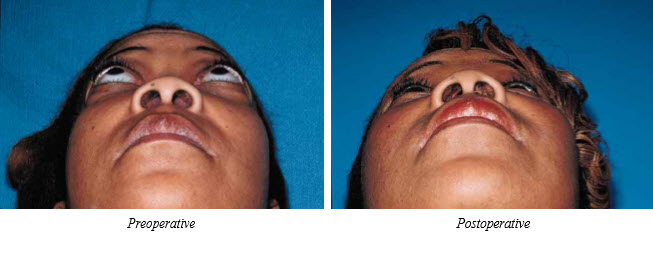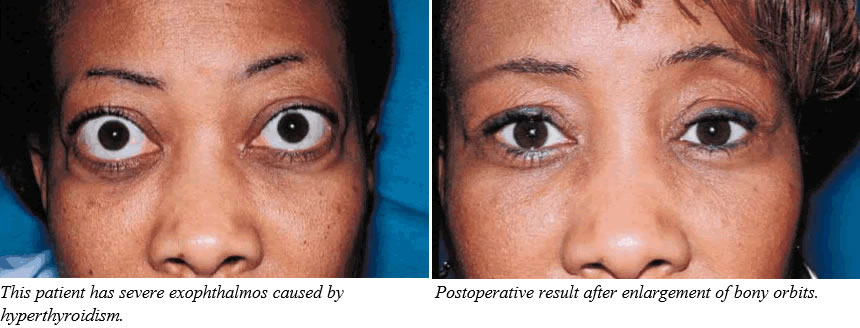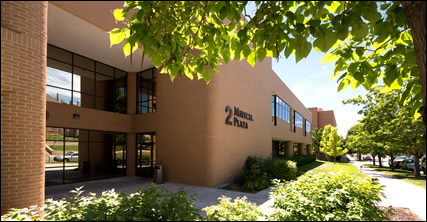Enophthalmos
Enophthalmos can be defined as the relative recession (backward or downward displacement) of the globe into the bony orbit. The three basic structures that determine globe position are the bony orbits, the ligament system and the orbital fat. Displacement of the orbital walls with enlargement of the bony orbit may be the major components in the production of enophthalmos in orbital fractures. Post-traumatic enophthalmos is frequently seen and is the result of disruption of the bony orbit and ligament system with displacement of the orbital soft tissue. This presents clinically as a sunken appearance to the eye with pseudoptosis and deepening of the supratarsal fold. Treatment involves reconstruction of the bony orbit with restoration of bony orbital volume and repositioning of the globe. The use of craniofacial techniques allows this to be accomplished with minimal complications.
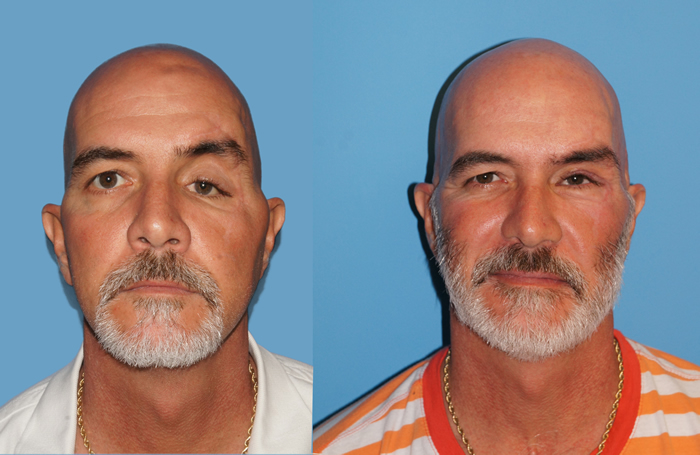
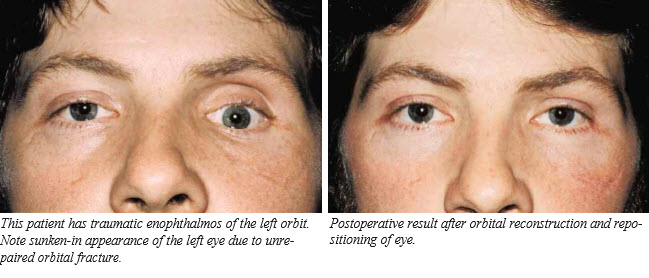


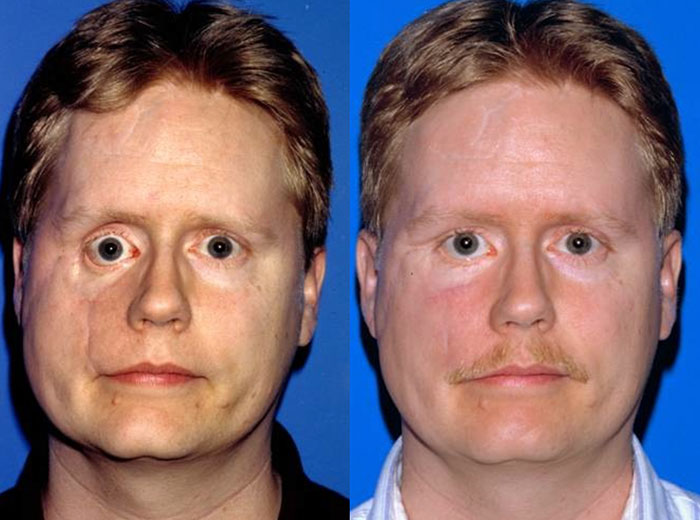
Click here for information on Correction of a Post traumatic Orbital Deformity.
Exophthalmos
Exophthalmos is an abnormal prominence or protrusion of the eyeball, most frequently seen in patients with Grave’s disease (hyperthyroidism). As with enophthalmos, surgical correction is frequently necessary to achieve the desired aesthetic result. The extent of the deformity dictates the surgeon’s choice of treatment options. Although severe exophthalmos may present as a surgical emergency in which vision is threatened, moderate exophthalmos can also be distressing to the patient — the wide-eyed stare, lid retraction, and proptosis are at best unsightly and at worst psychologically handicapping. By utilizing craniofacial approaches and techniques, excellent aesthetic results can be safely obtained. Mild to moderate cases are repaired by removing the floor and lateral wall of the orbit to allow for tissue decompression (removing compressive pressure on the eyeball itself), while severe cases necessitate a more aggressive approach including multi-wall (lateral, medial, and inferior) orbital osteotomies. This functionally enlarges the bony orbit, allowing the globe to assume a more normal posterior position.
